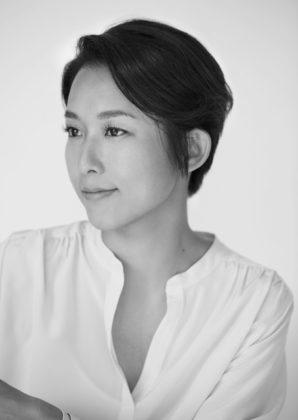

一級建築士登録 第351953号
 1981年生まれ
1981年生まれ
2004年 多摩美術大学環境デザイン学科卒業
2005年 Ateliers Jean Nouvel(アトリエ・ジャン・ヌーヴェル)フランス
2009年 株式会社イシマル 設計室チーフデザイナー
2010年 カーボンファイバーチェア「 CHERCHE MIDI(シェルシュミディ)/Zéphyr(ゼフィー)」発表
2013年 資生堂銀座本社ビルエントランス(受付カウンター・ベンチをデザイン)
2015年 資生堂ウィンドウディスプレイデザイン「美を動かそう」
DSA 日本空間デザイン賞優秀賞受賞
2016年 「CARBONE LUMIÈRES展」を開催(東京:AXIS GALLERY)
2017年 ATELIERS NÉ UN(アトリエ ネアン)設立
2017年 富山県美術館 「素材と対話するアートとデザイン」(カーボンファイバーチェア“Zéphyr")
2019年 フランス国立シテ建築遺産博物館「LE MOBILIER D'ARCHITECTES 1960-2020(建築家の家具展 1960年-2020年)」(カーボンファイバーチェア“Zéphyr")
Born in 1981.
2004 Department of Environmental Design,Tama Art University,
2005 Ateliers Jean Nouvel, Paris, France
2009 Design Office, ISHIMARU Co.(Chief Designer)
2010 Carbon fiber chair "CHERCHE MIDI/Zéphyr"
2013 Shiseido Ginza Head Office Building (reception counter and bench design)
2015 Shiseido Window Display Design "Let's Move Beauty"
DSA Japan Space Design Award for Excellence
2016 "CARBONE LUMIÈRES Exhibition" (Tokyo: AXIS GALLERY)
2017 Established "ATELIERS NÉ UN"
2017 "Art and Design in Dialogue with Materials", Toyama Prefectural Museum of Art(Carbon fiber chair “Zéphyr")
2019 "LE MOBILIER D'ARCHITECTES 1960-2020 (Architectural Furniture Exhibition 1960-2020)", Cité de l’architecture et du patrimoine, France
(Carbon fiber chair “Zéphyr")
京都府知事登録 第02879号
「ATELIERS NÉ UN(アトリエ ネアン)」には日本とフランス、両国の文化に触れ作品を生み出す鈴木の想いが込められており、日仏それぞれの言語から成り立っています。
【NÉ(ネ)】
“美しく輝く花を神にささげる台”の象形文字である「禰」
“生まれる”、“開花する”という意味のフランス語「Naître」の活用形「NÉ」
【UN(アン)】
人々が集う「菴」
クリエイトする人々が集い、日本の美しい四季を通して学び、進化してゆく場。
フランス語で“唯一”という意味の「UN(アン)」
制作の軸には「植物」や「光や闇」といった機能的な自然の美しさがあります。
カーボンファイバーなどの新素材や技術だけでなく、日本独自の伝統的な木造建築の技術や木製の在り方を模索しており、様々な素材の感性と共にデザインの可能性をどこまで引き出せるのかをこれからも探究し続けていきます。
" ATELIERS NÉ UN" has a meaning in each language of Japan and France, and is a reflection of the designer's desire to create works in contact with the cultures of both countries.
“禰(NÉ)” is a hieroglyphic character for "a platform for offering beautiful and shining flowers to the gods.
" NÉ" is the conjugated form of the French word "Naître" meaning "to be born" or "to blossom.
“菴(UN)”is the Japanese word for a "small hut" where people gather.
It is a place where creative people gather to learn and evolve through the beautiful Japanese seasons.
"UN" means "only one" in French.
The axis of our production is based on the beauty of functional nature, such as "plants" and "light and darkness.
We are exploring not only new materials and technologies such as carbon fiber, but also traditional Japanese wooden construction techniques and wooden ways of being.
We will continue to explore the sensibility and design possibilities of various materials.
